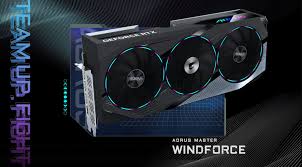Camera is a device used to capture images, either as still photographs or as moving images (videos). It works by recording light that passes through a lens and onto a light-sensitive surface, such as film or a digital sensor. The basic principle behind a camera is to capture and record light from a scene, producing a visual representation of that moment.
Key Components of a Camera
- Lens: The lens is a key element that focuses light onto the camera’s sensor or film. The quality and type of lens significantly impact the clarity, sharpness, and overall quality of the image. Lenses can vary in focal lengths, from wide-angle lenses that capture more of the scene to telephoto lenses that bring distant objects closer.
- Shutter: The shutter controls the amount of light that reaches the sensor by opening and closing at varying speeds. Fast shutter speeds are used to freeze motion, while slower shutter speeds can capture motion blur, especially in low-light conditions.
- Aperture: The aperture refers to the size of the opening in the lens through which light enters. It is measured in f-stops (e.g., f/1.8, f/5.6). A lower f-stop number represents a wider aperture, allowing more light to enter, while a higher f-stop number represents a narrower aperture, letting in less light.
- Sensor/Film: Traditional cameras used film as a medium for capturing images. In modern digital cameras, a sensor, typically a CMOS or CCD sensor, performs this function. The sensor converts light into an electrical signal, which is processed into an image.
- Viewfinder: The viewfinder allows the photographer to see and frame the subject of the photograph. In digital cameras, this can be an optical viewfinder (OVF) or an electronic viewfinder (EVF), or even a live preview on the camera’s screen.
- ISO: ISO measures the sensitivity of the sensor to light. A lower ISO value (e.g., 100) is used in bright conditions, while a higher ISO (e.g., 1600 or more) is used in darker environments. However, increasing ISO can introduce digital noise into an image, reducing quality.
Types of Cameras
- Compact Cameras (Point-and-Shoot): These are small, lightweight, and easy to use. They have a fixed lens and are ideal for casual photography, offering automatic settings for beginners.
- DSLR (Digital Single-Lens Reflex): DSLRs offer more control and versatility with interchangeable lenses and advanced settings. They use a mirror mechanism to reflect light from the lens into an optical viewfinder, allowing for real-time framing.
- Mirrorless Cameras: These cameras are similar to DSLRs in terms of control and quality but lack the mirror mechanism, making them more compact and often lighter. They use electronic viewfinders or screens for framing.
- Action Cameras: Designed for rugged environments, action cameras like the GoPro are small, durable, and capable of recording high-quality video, even in extreme conditions. They are often used for sports and adventure photography.
- Smartphone Cameras: The camera systems in smartphones have become increasingly sophisticated, with multiple lenses, AI-assisted features, and powerful sensors. Many people use their smartphones as their primary camera.
Camera Settings and Techniques
- Exposure: Exposure refers to how much light is captured by the sensor. It is determined by the combination of aperture, shutter speed, and ISO, also known as the exposure triangle.
- Focus: Cameras can have manual or automatic focus. Autofocus uses sensors to detect the sharpness of the subject, while manual focus allows the photographer to control the sharpness directly.
- White Balance: Adjusting white balance ensures that colors in the image look natural under different lighting conditions (e.g., daylight, tungsten, or fluorescent).
- Composition: Good composition techniques like the rule of thirds, leading lines, and framing help create visually appealing photographs by guiding the viewer’s eye to the subject.
Modern Advancements in Camera Technology
- AI and Computational Photography: Many modern cameras, especially smartphone cameras, use AI to enhance images, applying effects such as HDR, portrait mode, and real-time scene analysis to produce better photos automatically.
- 4K and 8K Video Recording: Cameras now commonly support high-resolution video recording, allowing for incredibly detailed footage.
- Image Stabilization: Optical or digital image stabilization compensates for camera shake, allowing for sharper images and smoother videos, especially in low-light or handheld shooting situations.
Cameras have evolved significantly, from early film-based devices to today’s digital models, making photography more accessible and allowing people to capture moments with incredible detail and accuracy. Whether for professional use or personal enjoyment, cameras remain a powerful tool for storytelling and artistic expression.


